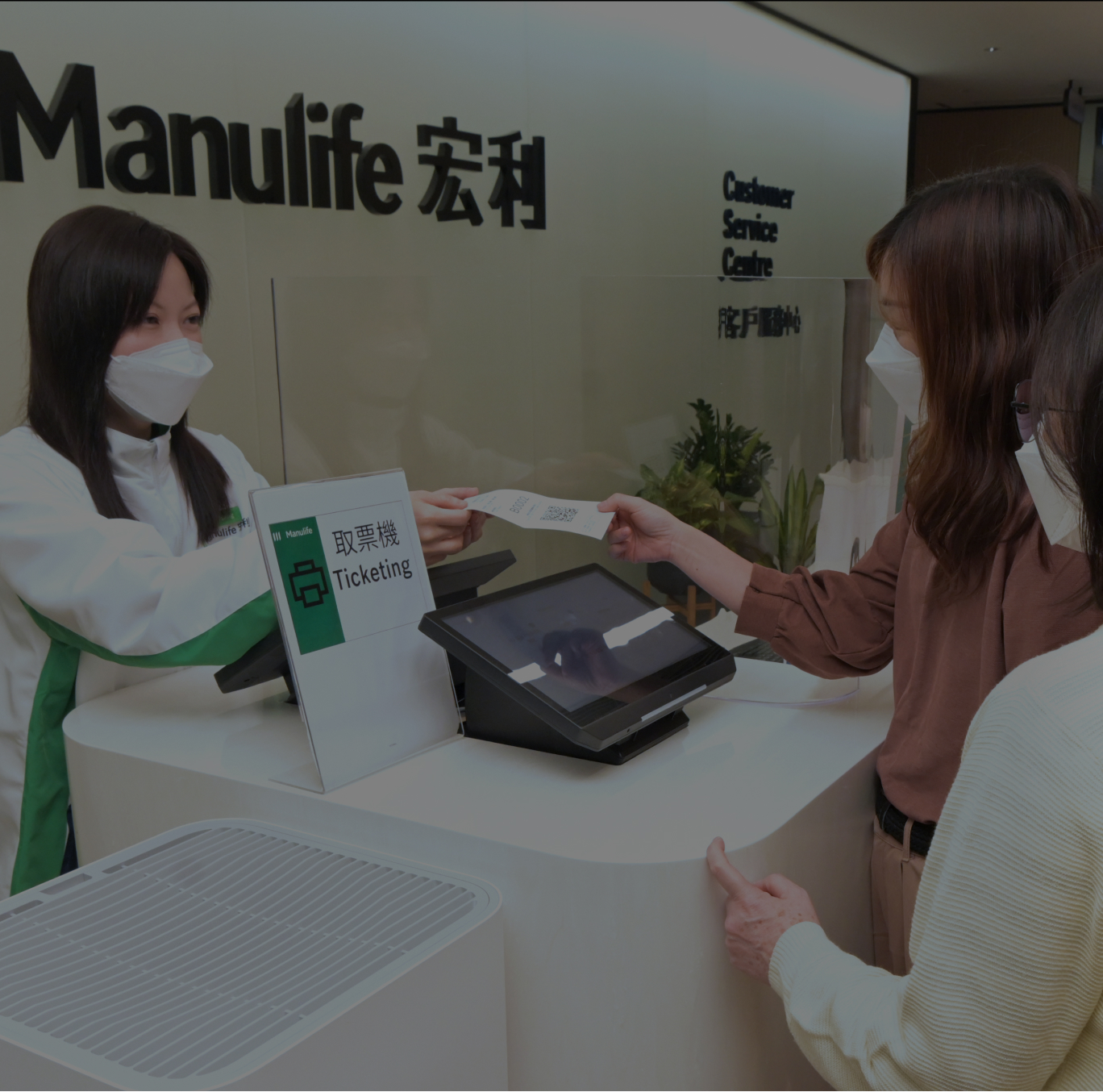In the workplace, we think of data as a tool to help us better utilize resources or track performance

Manulife: Using Data to Elevate Service and Design

Rarely is it used to inform and inspire design. But that’s precisely the approach EPAM Continuum employed to support Manulife in redesigning its customer experience in Hong Kong.
Manulife, a multinational insurance company and financial services provider, engaged EPAM Continuum to support the merger of two customer service centers in Hong Kong, where the company has had a significant presence for 125 years. The goal for the single, larger customer service center (CSC) was to leverage the increased demand and customer flow as an opportunity to rethink customer service.
Manulife and EPAM Continuum partnered to use customer voice and data to inform the design of the physical space, ultimately creating an experience that would be less “queue and transact” and more “guide and digitalize."

Defining the Challenge
We knew going in that long wait times for customers were a key challenge. People came in person for a broad range of reasons, from quick and easy questions to thorny issues that took an hour or more to resolve. But the complexity of their task had no relation to wait time.
EPAM Continuum had to figure out why customers needed in-person help and thoroughly understand customers wants and needs.
We analyzed qualitative and quantitative data from both customers and staff: This multi-faceted approach to data collection proved key to a human-centered design that would improve customer experience.
Understanding the Business
Getting to Know Customers
We talked to customers directly at the CSCs: a mom with a child in tow and a customer there to help an older parent, for example.
We also spent time observing the interactions between customers and staff, the flow of customer traffic and what waiting looked like. With repeated visits to the CSCs, we learned that staff are highly skilled in their roles, delivering real value to customers.
With our collected knowledge, we then turned to data to discover where the qualitative insights fit within the bigger picture. With this approach we were able to get a holistic view of how to improve customer experience.
Manulife kept data on customers based on product type, so we had to crunch the numbers differently to identify how long individual consults were taking. Isolating the tasks within a consult helped us come up with a plan to streamline the process.
Analysis of the data corroborated qualitative observations that a relatively small portion of customers were coming to the CSC to untangle complicated issues that take time. But the data also uncovered that the vast majority of customers were coming in with problems that could be resolved quickly and easily.
All of these insights helped to open up new ideas for designing the space.
Improving Customer Experience
While the combination of qualitative and quantitative is not new, the approach was innovative in that we integrated data points to create a fuller understanding of the customer needs and staff workflow. This shifted data analytics from an explanation of business processes to a tool for experience transformation.
In our analysis, the wait time was the central problem in an otherwise smooth-functioning CSC. EPAM Continuum used the synthesized data results to design a new experience, reallocating existing space and staff to shorten wait times and create more efficient throughput.
Concierge staff are deployed to determine the complexity of customers’ needs and match them with floating specialists to handle the more routine requests.
Turns out, the majority of the simple tasks can be accomplished with the support of the floating staff/concierge, eliminating the need to wait for a sit-down, one-on-one meeting. The new setup and space also better serve customers with more complex tasks because they can get started with the floating staff and then after identifying the questions that require more in-depth discussion, meet for their one-on-one much better prepared.

- HEAR FROM MANULIFE
“EPAM’s analysis presented a more dynamic service model, flexing around customers' needs to reduce queue time, increase overall capacity and, most importantly, improve customer experience. Changes were implemented in December 2021 with encouraging early results despite another pandemic wave.”
Stephen Matthews
AVP, Head of Service Excellence in Hong Kong
Learn more about EPAM's experience in the insurance industry here


